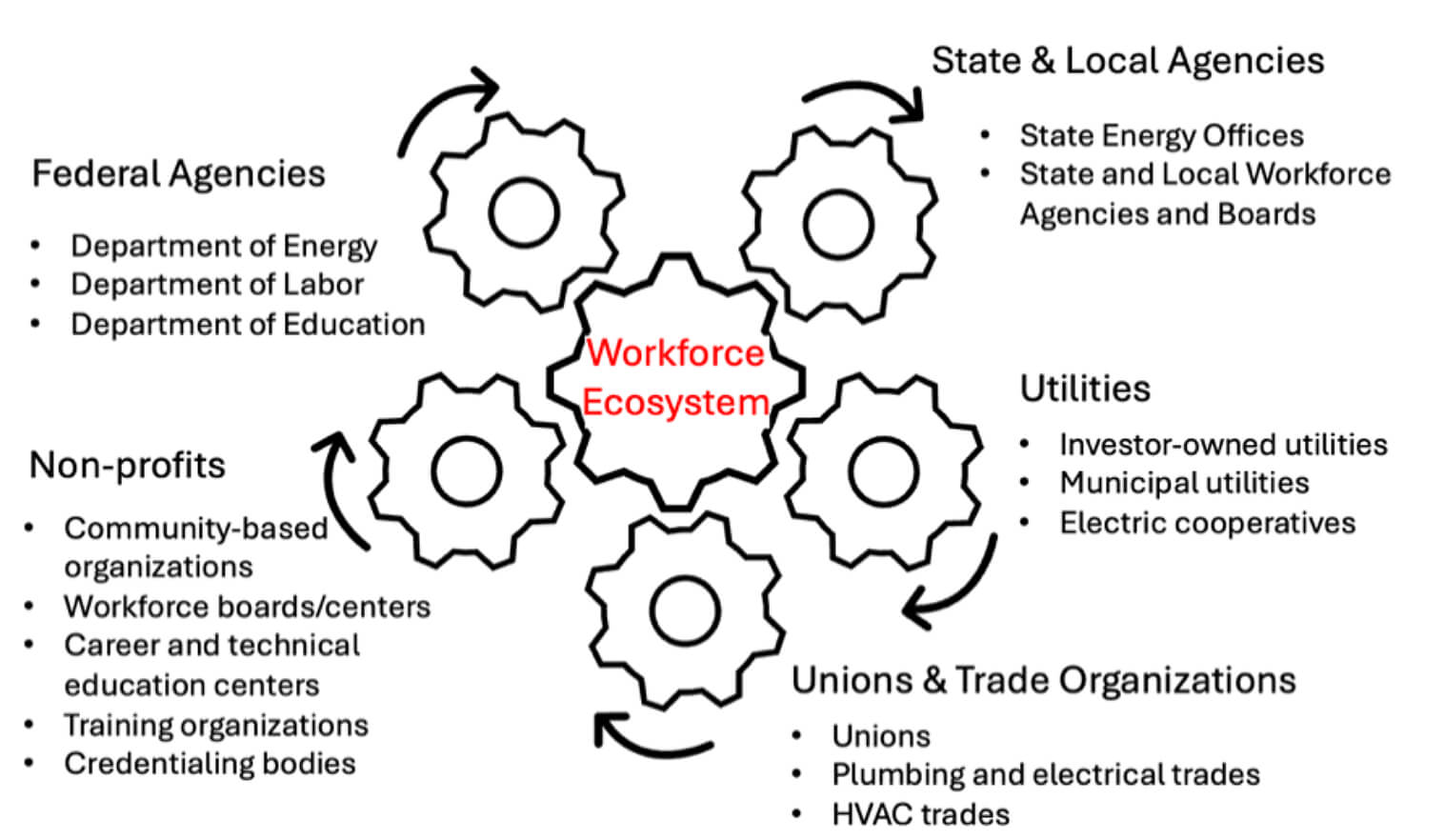In the United States, more than 2 million people are employed in energy efficiency, the largest sector of the energy industry. This sector is growing, spurred by the federal funds available through the Infrastructure Investment and Jobs Act (IIJA) and the Inflation Reduction Act (IRA) that will create new good-paying jobs. A skilled, diverse, and equitable workforce is critical to deliver energy efficiency projects across communities, including those that have been historically disadvantaged or underserved.
However, the current energy efficiency workforce is aging, and many employers struggle with retention. An intentional approach to workforce education and training is essential to prepare workers with the skills and knowledge necessary to maximize project energy and cost savings.
Many states have taken an active role to prepare and build a workforce capable of advancing energy efficiency. Their efforts vary, with some offering apprenticeships centered around on-the-job training, educational programs for high school and college students, and webinars about energy codes. The map below highlights workforce programs and federal funding received from the IRA and IIJA by state. For more information about specific categories of programs, such as weatherization training, the map can be filtered by program type.
Buildings Workforce Education and Training Stakeholders
There are many stakeholders involved in preparing and supporting a skilled workforce.
- Federal agencies support policies, programs, and initiatives to provide guidance on economy-wide goals and define areas for workforce education training. For example, the Department of Energy (DOE), Department of Labor (DOL), and Department of Education (ED) fund programs and provide a framework for workforce education programming and training.
- Through the IRA and IIJA, State Energy Offices have a new opportunity to design workforce programs to help deliver energy efficiency upgrades. State Energy Offices and other state and local agencies such as Workforce Boards provide funds and oversight for state level workforce training activities.
- Utilities provide education and training, opportunities that help develop worker pipelines that can help achieve energy efficiency goals
- Trade organizations and non-profits provide additional training resources, education, and social services to encourage new entrants to join the industry and incumbent workers to learn new skills.

Our resources
For over 40 years, ACEEE has been a leader in advancing energy efficiency to reduce energy waste and build an equitable clean energy future. ACEEE provides state and local technical assistance for equitable energy efficiency policies, programs, and workforce development strategies that promote a diverse and inclusive workforce. ACEEE is committed to producing research, technical work, and policy advocacy that maximizes inclusive and equitable workforce development efforts at the national, state, and local level with the support of various stakeholders including governments, non-profits, CBOs, and utilities. ACEEE is working to contribute to the growing workforce development research and development. The table below highlights reports, webinars, and case studies of this work for different stakeholders.
Publications and resources to help maximize the impact of federally funded programs | |
Best practices and program evaluation support for state and city workforce programs |
|
Technical resources and best practices for utilities |
|
Workforce development program support in collaboration with non-profits |
|
Outreach and technical resources for trade organizations |